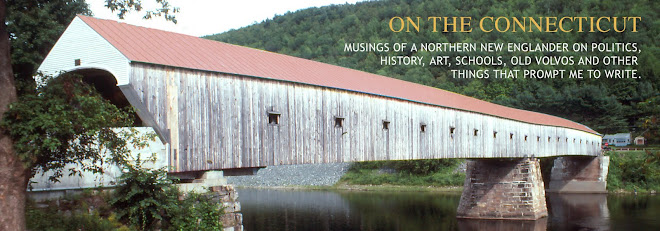Lebanon NH, Rural New Hampshire, 1939 -- Charles Kaeselau

The US Government commissioned more than 1300 murals for post office and other federal building interior walls from 1934 to 1943 under several different programs. The murals were intended to boost public morale and confidence in a population that was still recovering from the effects of the Great Depression by depicting uplifting and patriotic subjects. They featured artwork of very high artistic standards in public buildings, where it would accessible to all people.
Lexington MA, Midnight Ride of Paul Revere, 1937 -- Aiden Lassell Ripley

The murals were commissioned through competitions open to all artists in the United States. Almost 850 artists were commissioned to paint 1371 murals, most of which were installed in post offices. Sixty-two of the artists were women and three were African American.
A master artist was selected for each project, who chose assistants from the rolls of the WPA Art Project. The artists were paid only after each stage in the creative process was complete.
Milford NH, Log Rolling. 1940 -- Phillip von Saltza

The artists were asked to paint an “American scene" depicting ordinary citizens in a realistic manner. They were also encouraged to produce works appropriate to the communities where they were located and to avoid controversial subjects.
The selection of out-of-state artists sometimes caused local controversy. Residents who did not want to be portrayed as hicks or hayseeds often resented the portrayal of rural lifestyles by artists who had never visited the areas where their artwork would be displayed.
Bridgeport CT, Stagecoach and Modern Transportation, 1937 -- Robert Lambdin

Stagecoach and Modern Transportation detail

The first murals were commissioned under the New Deal’s Public Works of Art Project as a way to bring artists back into the job market in 1934 and 1935. The Treasury Relief Art Project commissioned later post office murals from 1935 to 1938. The Section of Fine Arts under the U.S. Treasury Department extended the program from 1938 to 1943.
Since the local post office was the most frequented government building by the public, the oil paintings on canvas were placed on the walls of newly constructed post offices. One percent of the money budgeted for each post office was set aside for the creation of the murals.
Ambler PA, Industry, Family and Agriculture, 1939 -- Harry Sternberg

Some of these wonderful murals have deteriorated or disappeared. Some are in buildings that are worth far less than the artwork. The United States Postal Service is making efforts to preserve and protect the remaining murals in their properties.
Built in 1930s as the headquarters of the US Postal Department, the recently renamed William Jefferson Clinton Federal Building in Washington DC houses some the most impressive of the murals. Controversy over the murals continues due to their outdated depictions of racism, exploitation of women and romanticism of every day life. You can view these historic murals in their original context and experience how American society has changed over time.
Some of the murals in the Clinton Federal Building (click on the images to enlarge):
Arctic Mail Service, 1937 -- Rockwell Kent
Mail Coach Bandits, 1936 -- William C. Palmer
Sorting the Mail, 1936 -- Reginald Marsh
General Store and Post Office, 1937 -- Doris Lee
The murals present an opportunity for adventure and art appreciation. There are still murals in every state, and post offices are open to the public on weekdays and Saturdays. You can find a list of all the murals at this link -- https://wiki2.org/en/List_of_United_States_post_office_murals. Make a checklist of the murals in your region and see how many you can visit.
Freeport NY, Suburban Post Office in Winter, 1937 -- William Gropper







No comments:
Post a Comment